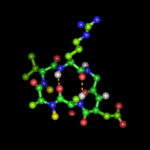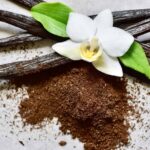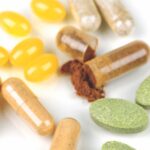Overview:
Aloe Vera is a revolutionary herb for health.
History:
Aloe vera has been used for medicinal purposes in several cultures for millennia: Greece, Egypt, India, Mexico, Japan and China. Egyptian queens Nefertiti and Cleopatra used it as part of their regular beauty regimes. Alexander the Great, and Christopher Columbus used it to treat soldiers’ wounds. The first reference to Aloe vera in English was a translation by John Goodyew in A.D. 1655 of Dioscorides’ Medical treatise De Materia Medica. By the early 1800s, Aloe vera was in use as a laxative in the United States, but in the mid-1930s, a turning point occurred when it was successfully used to treat chronic and severe radiation dermatitis.
Extended Information and Mechanisms of Benefits:
Aloe vera contains 75 potentially active constituents: vitamins, enzymes, minerals, sugars, lignin, saponins, salicylic acids and amino acids.
Vitamins: It contains vitamins A (beta-carotene), C and E, which are antioxidants. It also contains vitamin B12, folic acid, and choline. Antioxidant neutralizes free radicals.
Enzymes: It contains 8 enzymes: aliiase, alkaline phosphatase, amylase, bradykinase, carboxypeptidase, catalase, cellulase, lipase, and peroxidase. Bradykinase helps to reduce excessive inflammation when applied to the skin topically, while others help in the breakdown of sugars and fats.
Minerals: It provides calcium, chromium, copper, selenium, magnesium, manganese, potassium, sodium and zinc. They are essential for the proper functioning of various enzyme systems in different metabolic pathways and few are antioxidants.
Sugars: It provides monosaccharides (glucose and fructose) and polysaccharides: (glucomannans/polymannose). These are derived from the mucilage layer of the plant and are known as mucopolysaccharides. The most prominent monosaccharide is mannose-6-phosphate, and the most common polysaccharides are called glucomannans [beta-(1,4)-acetylated mannan]. Acemannan, a prominent glucomannan has also been found. Recently, a glycoprotein with antiallergic properties, called alprogen and novel anti-inflammatory compound, C-glucosyl chromone, has been isolated from Aloe vera gel.
Anthraquinones: It provides 12 anthraquinones, which are phenolic compounds traditionally known as laxatives. Aloin and emodin act as analgesics, antibacterials and antivirals.
Fatty acids: It provides 4 plant steroids; cholesterol, campesterol, β-sisosterol and lupeol. All these have anti-inflammatory action and lupeol also possesses antiseptic and analgesic properties.
Hormones: Auxins and gibberellins that help in wound healing and have anti-inflammatory action.
Others: It provides 20 of the 22 human required amino acids and 7 of the 8 essential amino acids. It also contains salicylic acid that possesses anti-inflammatory and antibacterial properties. Lignin, an inert substance, when included in topical preparations, enhances penetrative effect of the other ingredients into the skin. Saponins that are the soapy substances form about 3% of the gel and have cleansing and antiseptic properties.













